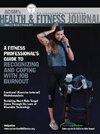Care of the Athlete with Diabetes
IF 1.6
4区 医学
Q3 SPORT SCIENCES
引用次数: 0
Abstract
Patients with type 1 diabetes mellitus (T1DM) should be encouraged to live full and healthy lives. For many patients with T1DM, this includes sports participation. This review provides an overview of T1DM and its treatment with emphasis on challenges that are encountered frequently by the athlete and his or her health care providers. Glucose homeostasis requires a dynamic balance that includes mechanisms to raise and lower blood glucose. Normally, beta cells in the pancreas respond to dietary carbohydrate intake and release insulin to maintain blood glucose within a narrow target for optimal health. Insulin allows blood glucose to be used for energy or stored for future use. Later, when the blood glucose begins to fall, the pancreas quickly halts insulin release. In an exercising or fasted state, when cells need more energy than is available, the body releases counterregulatory hormones (glucagon, epinephrine, norepinephrine, cortisol, and growth hormone) to help mobilize glucose that has been stored and promote energy release from fat stores. In addition, working skeletal muscle expresses transporters that allow it to take in glucose from the blood without the help of insulin. This is very important for glucose homeostasis in athletes. T1DM is caused by the autoimmune destruction of the pancreatic beta cells. The condition has a prevalence of approximately 1 in 500 Americans less than 20 years of age, with the highest prevalence in non-Hispanic whites (1). This results in an insulin deficiency that prevents the blood glucose from entering cells and providing energy, which, in turn, leads to increases in blood glucose (hyperglycemia) while depriving the cell of its main energy source. The body responds to the lack of available energy by mobilizing energy stored as fat. The unchecked breakdown of the body's fat stores (fatty acid oxidation) results in weight loss and the production of ketones as a byproduct. Ketones do provide an energy substrate but also are strongly anionic and can lead to dangerous acidosis (ketoacidosis). Patients with T1DM are dependent on injections or infusions of exogenous insulin. For many years, the two available forms of insulin were short-acting regular insulin and intermediateacting neutral protamine Hagedorn (NPH) insulin. These insulins are given at set doses and times, typically in three daily injections. With this plan, the patient must eat a constant amount of carbohydrates at prescribed times to maintain euglycemia. Although effective and relatively inexpensive, the regular/NPH regimen requires adherence to a rigid lifestyle. With the advent糖尿病运动员的护理
应鼓励1型糖尿病(T1DM)患者过充实健康的生活。对于许多T1DM患者来说,这包括参加体育运动。这篇综述概述了T1DM及其治疗,重点是运动员和他或她的卫生保健提供者经常遇到的挑战。葡萄糖稳态需要动态平衡,包括提高和降低血糖的机制。正常情况下,胰腺中的β细胞对饮食中的碳水化合物摄入做出反应,并释放胰岛素,将血糖维持在最佳健康的狭窄目标范围内。胰岛素使血糖被用作能量或储存起来以备将来使用。后来,当血糖开始下降时,胰腺迅速停止胰岛素的释放。在运动或禁食状态下,当细胞需要的能量超过可用的能量时,身体会释放反调节激素(胰高血糖素、肾上腺素、去甲肾上腺素、皮质醇和生长激素),以帮助调动储存的葡萄糖,并促进脂肪储存的能量释放。此外,工作中的骨骼肌表达转运蛋白,使其能够在没有胰岛素的帮助下从血液中吸收葡萄糖。这对运动员的葡萄糖稳态非常重要。T1DM是由自身免疫破坏胰腺细胞引起的。20岁以下的美国人大约每500人中就有1人患有这种疾病,其中非西班牙裔白人的患病率最高(1)。这导致胰岛素缺乏,阻止血糖进入细胞并提供能量,进而导致血糖升高(高血糖症),同时剥夺了细胞的主要能量来源。身体通过动员储存为脂肪的能量来应对可用能量的缺乏。身体脂肪储存的不受控制的分解(脂肪酸氧化)导致体重减轻和产生酮作为副产物。酮类确实提供能量底物,但也是强阴离子,可导致危险的酸中毒(酮症酸中毒)。T1DM患者依赖于注射或输注外源性胰岛素。多年来,两种可用的胰岛素是短效常规胰岛素和中效中性鱼精蛋白Hagedorn (NPH)胰岛素。这些胰岛素按固定剂量和时间注射,通常每天注射三次。按照这个计划,病人必须在规定的时间吃一定量的碳水化合物以维持血糖正常。虽然有效且相对便宜,但常规/NPH方案需要坚持严格的生活方式。随着时代的到来
本文章由计算机程序翻译,如有差异,请以英文原文为准。
求助全文
约1分钟内获得全文
求助全文
来源期刊

Acsms Health & Fitness Journal
医学-运动科学
CiteScore
1.90
自引率
13.30%
发文量
104
审稿时长
>12 weeks
期刊介绍:
ACSM''s Health & Fitness Journal®, an official publication from the American College of Sports Medicine (ACSM), is written to fulfill the information needs of fitness instructors, personal trainers, exercise leaders, program managers, and other front-line health and fitness professionals. Its mission is to promote and distribute accurate, unbiased, and authoritative information on health and fitness. The journal includes peer-reviewed features along with various topical columns to cover all aspects of exercise science and nutrition research, with components of ACSM certification workshops, current topics of interest to the fitness industry, and continuing education credit opportunities.
 求助内容:
求助内容: 应助结果提醒方式:
应助结果提醒方式:


